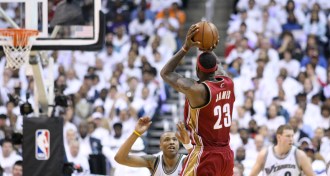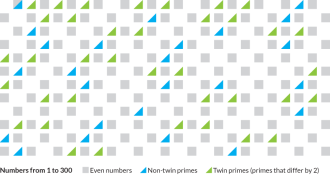Math
Sign up for our newsletter
We summarize the week's scientific breakthroughs every Thursday.
-
 Science & Society
Science & SocietyIn a nuclear attack, there’s no avoiding the brutal math
Knowing a few key numbers could help save your life if a nuclear bomb drops.
-
 Math
MathTomorrow’s catch
A biologist who formerly applied his mathematical talents in finance has developed new ways of predicting the ups and downs of fish populations.
-
 Computing
ComputingMaterials’ light tricks may soon extend to doing math
A simulation paves the way toward metamaterials that can perform ultrafast complex mathematical operations using light waves.
-
 Math
MathYear in Review: Progress made toward twin prime proof
A surprising advance sparks a flurry of work on the mathematical conjecture.
-
 Math
MathTwin primes and prime bunches in mathematicians’ crosshairs
For second time this year, a mathematician makes a major advance toward proving a long-standing conjecture.
-
 Math
MathRise of Big Data underscores need for theory
Big Data can help scientists cope with complex systems, but only with an appreciation of its limits and recognition of the need for theoretical modeling.
-
 Math
MathWhy Big Data is bad for science
Big Data is supposed to be a scientific bonanza, but it challenges the capabilities of computer science, statistical tests and perhaps calls for revamping the scientific method itself.
-
 Math
MathScientists who claim ‘hot hand’ is a myth have never had one
The “hot hand” in basketball is more than a lucky streak or defiance of statistical chance.
-

-
 Math
MathTwin primes
Mathematicians have conjectured since Euclid’s time that there are infinite pairs of prime numbers.
By David Harris -

-
